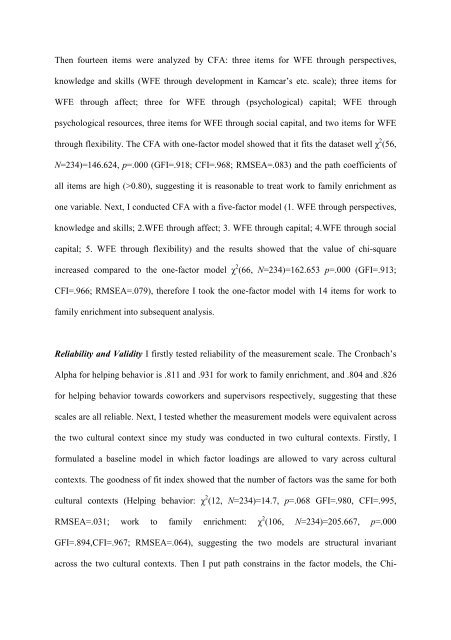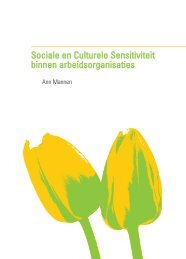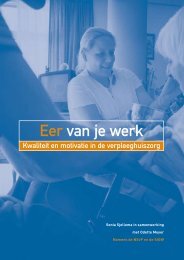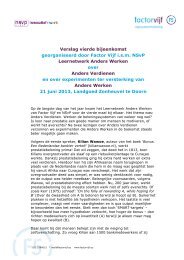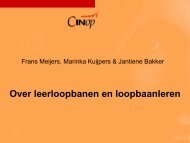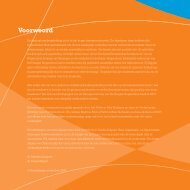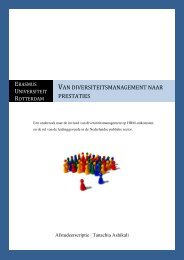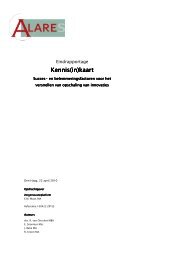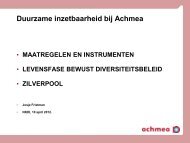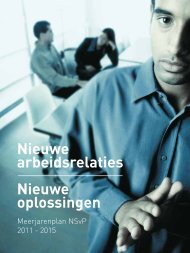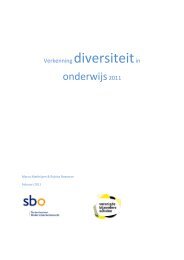Master Thesis The Relationship between ... - Innovatief in Werk
Master Thesis The Relationship between ... - Innovatief in Werk
Master Thesis The Relationship between ... - Innovatief in Werk
You also want an ePaper? Increase the reach of your titles
YUMPU automatically turns print PDFs into web optimized ePapers that Google loves.
<strong>The</strong>n fourteen items were analyzed by CFA: three items for WFE through perspectives,knowledge and skills (WFE through development <strong>in</strong> Kamcar’s etc. scale); three items forWFE through affect; three for WFE through (psychological) capital; WFE throughpsychological resources, three items for WFE through social capital, and two items for WFEthrough flexibility. <strong>The</strong> CFA with one-factor model showed that it fits the dataset well χ 2 (56,N=234)=146.624, p=.000 (GFI=.918; CFI=.968; RMSEA=.083) and the path coefficients ofall items are high (>0.80), suggest<strong>in</strong>g it is reasonable to treat work to family enrichment asone variable. Next, I conducted CFA with a five-factor model (1. WFE through perspectives,knowledge and skills; 2.WFE through affect; 3. WFE through capital; 4.WFE through socialcapital; 5. WFE through flexibility) and the results showed that the value of chi-square<strong>in</strong>creased compared to the one-factor model χ 2 (66, N=234)=162.653 p=.000 (GFI=.913;CFI=.966; RMSEA=.079), therefore I took the one-factor model with 14 items for work tofamily enrichment <strong>in</strong>to subsequent analysis.Reliability and Validity I firstly tested reliability of the measurement scale. <strong>The</strong> Cronbach’sAlpha for help<strong>in</strong>g behavior is .811 and .931 for work to family enrichment, and .804 and .826for help<strong>in</strong>g behavior towards coworkers and supervisors respectively, suggest<strong>in</strong>g that thesescales are all reliable. Next, I tested whether the measurement models were equivalent acrossthe two cultural context s<strong>in</strong>ce my study was conducted <strong>in</strong> two cultural contexts. Firstly, Iformulated a basel<strong>in</strong>e model <strong>in</strong> which factor load<strong>in</strong>gs are allowed to vary across culturalcontexts. <strong>The</strong> goodness of fit <strong>in</strong>dex showed that the number of factors was the same for bothcultural contexts (Help<strong>in</strong>g behavior: χ 2 (12, N=234)=14.7, p=.068 GFI=.980, CFI=.995,RMSEA=.031; work to family enrichment: χ 2 (106, N=234)=205.667, p=.000GFI=.894,CFI=.967; RMSEA=.064), suggest<strong>in</strong>g the two models are structural <strong>in</strong>variantacross the two cultural contexts. <strong>The</strong>n I put path constra<strong>in</strong>s <strong>in</strong> the factor models, the Chi-


